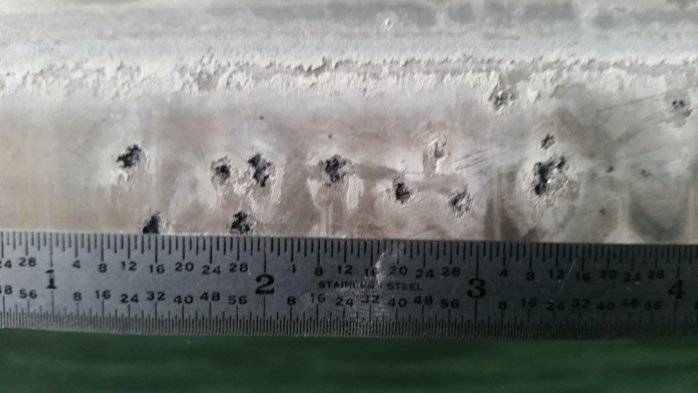
Pontooning in Paradise: A Guide to Using Aluminum Boats in Southwest Florida Saltwater
Share
Pontooning in Paradise: A Guide to Using Aluminum Boats in Southwest Florida Saltwater
Southwest Florida is a boater's dream, with its stunning Gulf waters and intricate network of bays and estuaries. Pontoon boats are a popular choice for enjoying this paradise, but if you're new to the area or considering a new boat, you might have questions about how aluminum pontoons fare in this saltwater environment. The good news is that with the right approach, aluminum boats can absolutely thrive here. The key is understanding the challenges and taking proactive steps to address them.
The Saltwater Challenge: Corrosion and Electrolysis
The biggest concern for any aluminum boat owner in a saltwater environment is corrosion. Saltwater is a highly corrosive electrolyte, and the warm, humid climate of Southwest Florida only accelerates this process. There are two primary types of corrosion to be aware of:
-
Galvanic Corrosion: This is the most common form and occurs when two dissimilar metals are in contact with each other in an electrolyte (saltwater). For example, a stainless steel fastener connected directly to an aluminum pontoon can act like a small battery, causing the more "active" metal—the aluminum—to corrode. The result is a pitting or flaking of the aluminum, which can weaken the structure over time.
-
Electrolysis (Stray Current Corrosion): This is a more aggressive and localized form of corrosion caused by stray electrical currents in the water. These currents can come from a boat's own faulty wiring or even from neighboring boats at a marina. When these currents pass through the water and into your boat, they can rapidly eat away at the aluminum, causing significant damage.
The Role of Anti-Fouling Paint and the Importance of an Epoxy Barrier Coat
To combat marine growth like barnacles and algae, most boat owners in Southwest Florida use anti-fouling bottom paint. For aluminum pontoons, this is a critical line of defense against corrosion as well. However, you can't simply apply bottom paint directly to the aluminum.
This is where a high-build epoxy barrier coat comes in. Before applying any bottom paint, it is absolutely essential to apply a multi-coat epoxy barrier coat to the pontoons. This tough, non-porous layer serves as a critical shield, creating a waterproof barrier between the aluminum hull and the corrosive saltwater. It also provides a proper foundation for the anti-fouling paint to adhere to. Without this barrier coat, the anti-fouling paint may not adhere properly, and some of the biocides in the paint can actually cause corrosion on the aluminum.
A key difference between aluminum and fiberglass boats is the maintenance schedule for bottom paint. While a fiberglass boat with a good paint job might last two to three years in the water, the unforgiving conditions of Southwest Florida saltwater and the unique challenges of protecting aluminum often necessitate a more frequent schedule. It is highly recommended to inspect and reapply your anti-fouling paint annually on aluminum pontoons. This proactive approach ensures the protective barrier remains intact and effective, preventing costly corrosion and keeping your boat's performance at its best.
Best Practices for Protecting Your Pontoon
Fortunately, a few simple best practices can dramatically extend the life of your aluminum pontoon in saltwater:
-
Sacrificial Anodes: These are the most important defense against galvanic corrosion. Anodes (often called "zincs," even though they are now commonly made of a special aluminum alloy) are more "active" than your boat's aluminum pontoons. When placed in saltwater, the anodes corrode first, sacrificing themselves to protect the more valuable parts of your boat. Check and replace your anodes regularly.
-
Proper Bottom Paint: As mentioned, always use an anti-fouling paint specifically designed for aluminum and apply it over a proper epoxy barrier coat.
-
Regular Inspections and Cleaning: After each use, wash down your entire boat with fresh water, paying close attention to the pontoons and any metal fittings. Regularly inspect the pontoons for any signs of pitting or corrosion, and address them immediately.
-
Shore Power Precautions: If your boat is docked at a marina with shore power, consider installing a galvanic isolator. This device helps block stray currents from other boats that could lead to electrolysis.
-
Quality Construction: Look for boats with "saltwater packages" or those built with higher-grade, corrosion-resistant materials. This can include features like solid keels, sealed strakes, and the use of isolating materials (like nylon washers) between different metals.
By following these best practices, you can enjoy all the benefits of an aluminum pontoon boat—its light weight, durability, and low maintenance—without worrying about the unique challenges of Southwest Florida's saltwater environment.
